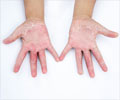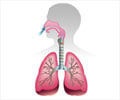Light therapy combined with drugs may be an effective treatment for patients with a variety of fungal infections according to a study which was
Light therapy combined with drugs may be an effective treatment for patients with a variety of fungal infections according to a study which was focused on the mechanism by which an infectious fungus perceives light. This finding could play an important role because it suggests that changes in light following fungal invasion may spark infection.
Light normally inhibits mating of the C. neoformans -- a potentially life-threatening human pathogen. Two genes have been identified for the response. It is said that the loss of the same genes reduces fungal infection in mice. Mice which lacked either of the light-sensing genes and were inoculated with the C. neoformans remained healthy 30 days later, while those infected with the normal fungus died after 30 days.Light therapy is currently used for certain medical conditions. The most common method is called bright-light therapy, where patients sit near a special light box.The genes required for light sensing does not contribute to the ability of the fungus to cause infection. However, surprisingly it contributes to the rapidity with which the fungus causes life threatening infection in the host. It is therefore conceivable that light could be used as a therapy for fungal infections, particularly infections at the body surface, such as those of skin or nails.











